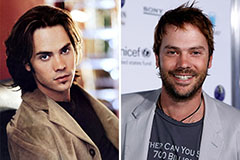Around the exciting and often uncertain globe of professional wrestling, champion belts hold a importance that transcends plain embellishment. They are the utmost icons of achievement, effort, and supremacy within the made even circle. Among the most respected and historically rich titles in the market are the WWF Championship Belts, a family tree that goes back to the very structure of what is now called copyright. These belts have not only represented the peak of wrestling prowess however have also progressed in style and significance along with the promotion itself, becoming renowned artifacts valued by followers worldwide.
The journey of the WWF Championship began in 1963 when the Entire World Wide Wrestling Federation (WWWF), the precursor to the WWF and at some point copyright, was created. Following a conflict with the National Fumbling Partnership (NWA), Northeast marketers developed their very own banner and identified Friend Rogers as their inaugural WWWF Whole world Heavyweight Champ on April 25, 1963. Surprisingly, some accounts recommend that Rogers was awarded the WWWF title belt, which was an old USA title he currently possessed, as a placeholder until a new style could be developed.
Throughout the WWWF era (1963-1979), the champion belt went through several models, commonly accompanying the periods of its most popular owners. Bruno Sammartino, the famous "Living Tale," held the title for an remarkable consolidated overall of over 4,000 days across 2 reigns. During his time, various layouts were seen, including one shaped like the contiguous USA, highlighting the regional roots of the promotion. Later on, a extra conventional style featuring two wrestlers grappling over an eagle became associated with Sammartino's 2nd reign and the champions who followed him, such as " Super Star" Billy Graham and Bob Backlund.
The year 1979 noted a considerable shift as the WWWF officially ended up being the World Wrestling Federation (WWF). This rebranding would at some point cause modifications in the champion's name and look. In the early 1980s, as the WWF started its ascent towards ending up being a worldwide sensation, a larger, green natural leather belt with gigantic gold plates was presented. This design featured a wrestler holding a championship with the world behind him, absolutely declaring the holder as the "World Champion." Notably, the side plates of this version provided the family tree of previous champions, a tradition that acknowledged the title's abundant background. This renowned belt was held by numbers like Bob Backlund, The Iron Sheik, and, many famously, Hunk Hogan, who carried it throughout the "Hulkamania" age, a duration of unmatched mainstream success for the WWF.
The mid to late 1980s saw the introduction of what several think about among the most cherished layouts in battling history: the "Winged Eagle" championship. Debuting in early 1988, with Hulk Hogan as the initial holder, this design featured a impressive eagle with outstretched wings as the focal point, flanked by smaller side plates. The "Winged Eagle" belt ended up being a symbol of excellence throughout the late 1980s "Rock 'n' Fumbling" period and well right into the 1990s " Brand-new Generation" period. Iconic champs such as Randy Savage, The Ultimate Warrior, Bret wwf belts " Gunman" Hart, and Shawn Michaels all happily held this version of the title. The "Winged Eagle" also transitioned right into the early years of the " Perspective Era," with " Rock Cold" Steve Austin being the last permanent champ to use it.
The "Attitude Age," which took off in appeal in the late 1990s, brought with it a extra hostile and edgy visual, mirrored in the WWF Champion style. In late 1998, the " Huge Eagle" belt was introduced. This design included a larger main plate with a prominent WWF " scrape" logo, symbolizing the firm's contemporary identification. While preserving a feeling of status, the "Big Eagle" style straightened with the rebellious spirit of the era and was held by fabulous numbers like "Stone Cold" Steve Austin, The Rock, and Mick Foley.
As the calendar turned to the brand-new centuries, the WWF underwent one more change, ending up being Whole world Fumbling Entertainment (copyright) in 2002. This era also saw the marriage of the WWF Champion with the copyright Champion ( obtained after copyright's acquisition of Globe Champion Fumbling). The " Undeniable" champion was represented by both the " Huge Eagle" and the copyright's "Big Gold Belt" being held at the same time. This unification was temporary, as the re-established copyright divided its roster right into two brands, Raw and copyright, bring about the creation of a brand-new Entire world Heavyweight Championship for the Raw brand, while the initial title ended up being exclusive to copyright and was relabelled the copyright Championship.
Ever since, the copyright Champion has remained to progress in name and design. In the mid-2000s, John Cena presented the " Rewriter" belt, a questionable yet undeniably attention-grabbing layout including a huge copyright logo design that might spin. This showed Cena's character and interest a more youthful audience. Subsequent layouts have actually aimed to mix contemporary aesthetics with a feeling of history and eminence.
Recently, specifically considering that April 2022, the copyright Championship has been protected along with the copyright Universal Champion as the Undisputed copyright Universal Champion, though both titles kept their individual family trees. Originally stood for by both belts, a single, unified design eventually arised, decorated with black rubies and the holder's customized side plates. Since April 13, 2025, Cody Rhodes holds the Undeniable copyright Champion, having unified it after beating Roman Powers at copyright XL in 2024. Following his success, copyright formally relabelled the unified title to the Undeniable copyright Championship.
The WWF Championship Belts, throughout their different versions, have acted as greater than just prizes. They stand for heritages, ages, and the many tales told within the fumbling ring. Each design is intrinsically linked to the champs who held them and the durations they specified. From the traditional splendour of the "Winged Eagle" to the vibrant statement of the " Rewriter" and the existing unified design, these belts are substantial items of battling background, instantaneously recognizable signs of achievement worldwide of expert wrestling. Their evolution mirrors the evolution of the company itself, continuously adapting to the moments while permanently recognizing the rich tradition upon which they were built.
 Bradley Pierce Then & Now!
Bradley Pierce Then & Now! Michael C. Maronna Then & Now!
Michael C. Maronna Then & Now! Barry Watson Then & Now!
Barry Watson Then & Now! Gia Lopez Then & Now!
Gia Lopez Then & Now! Kelly Le Brock Then & Now!
Kelly Le Brock Then & Now!